The DJI Air 3, considered one of DJI’s more recent drones, has frequently been known as one of the crucial best possible all-around drones launched in 2023 for newbies and fanatics alike.
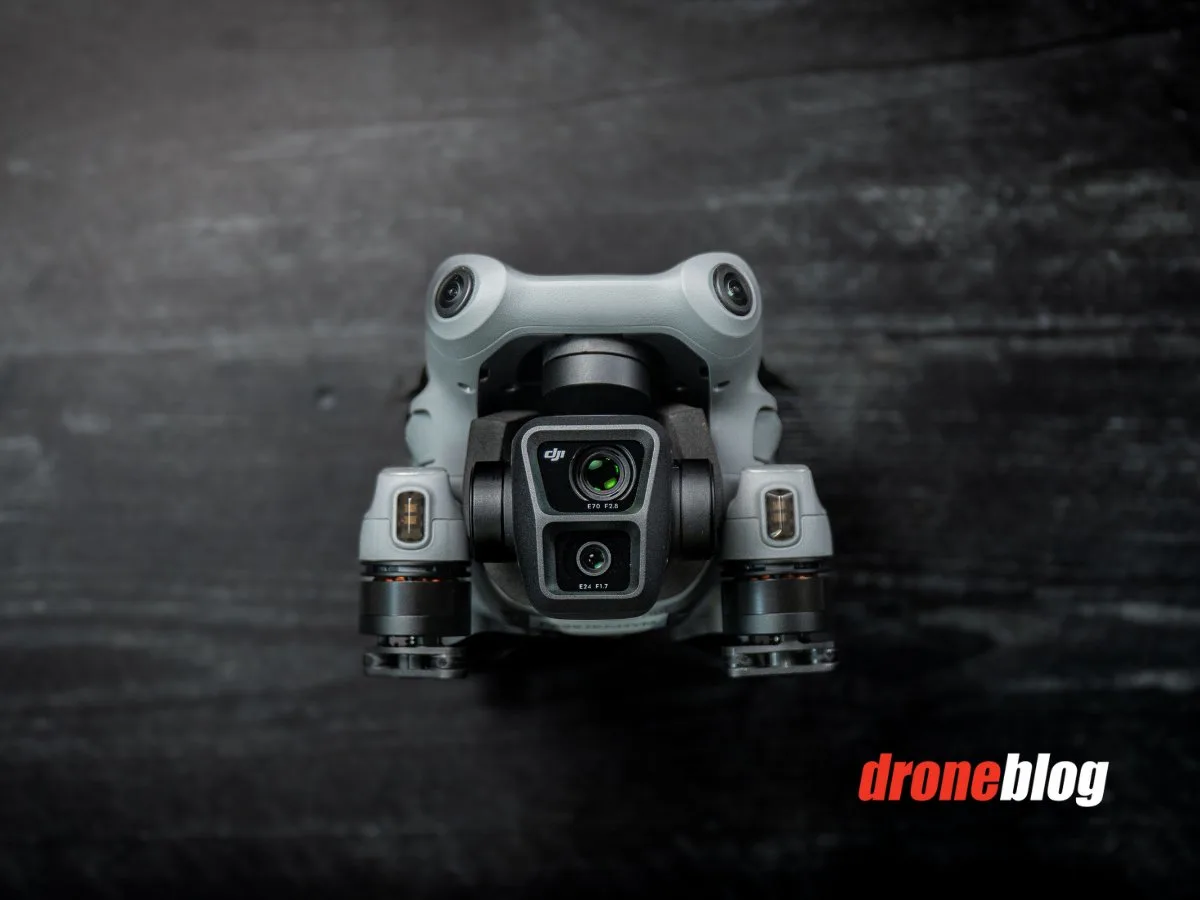
Let’s take a look at this drone’s images and videography best possible settings to deliver out the Air 3’s highest-quality imagery.
On this article, we can be going over picture and video-related definitions, guidelines, and the most efficient settings for ISO, Body Charge, Shutter Pace, White Steadiness, and Colour Profile settings for the DJI Air 3.
Absolute best Video Settings at a Look
In the case of “Absolute best” for any topic, it may well all be very subjective.
In gentle of this, our “Absolute best” video settings are merely settings that we propose or counsel for purchasing essentially the most out of the Air 3 digicam.
Be happy to check and mess around with quite a lot of video settings to get the most efficient setup on your taste of video capturing.
- ISO 100
- 24/30 FPS
- 1/50 or 1/60 Shutter Pace
- Guide White Steadiness
- D-Log M (10-bit coloration), H.265
- MP4 video structure
- 4k Solution
» MORE: DJI Air 3 Overview – Is This the Drone for You?
Professional Mode (Footage and Movies)
Similar to a DSLR or Mirrorless digicam, the Air 3 has quite a lot of settings that may be manually modified for your liking to succeed in the most efficient and {most professional} pictures and cinematic video photos.
To reach the most efficient picture and video settings at the Air 3, it’ll be crucial to get out of Auto/Computerized settings and into DJI’s Guide digicam settings, known as Professional mode.
To get to Professional mode when capturing video:
Step 1: Whilst in video mode, faucet the digicam icon at the backside appropriate of the DJI Fly app stay view display screen.
Step 2: If the video settings are recently set to Auto, tapping the digicam icon will then alternate the mode to Professional.
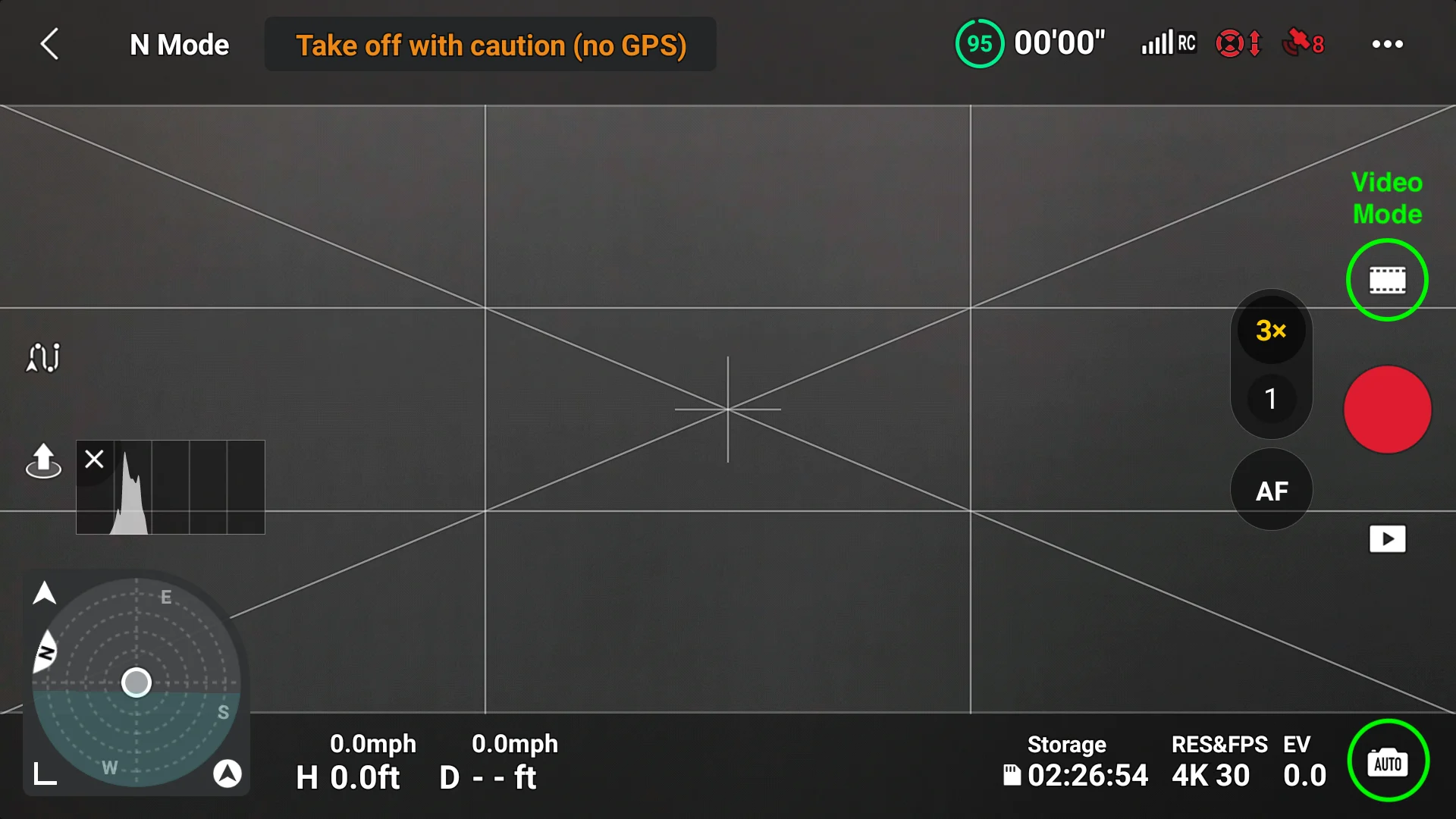

» MORE: DJI Air 3 Newbies Information (Step-by-Step Information)
To get to Professional mode when taking pictures:
Step 1: Whilst in picture mode, faucet the digicam icon at the backside appropriate of the DJI Fly app stay view display screen.
Step 2: If the picture settings are recently set to Auto, tapping the digicam icon will then alternate the mode to Professional.
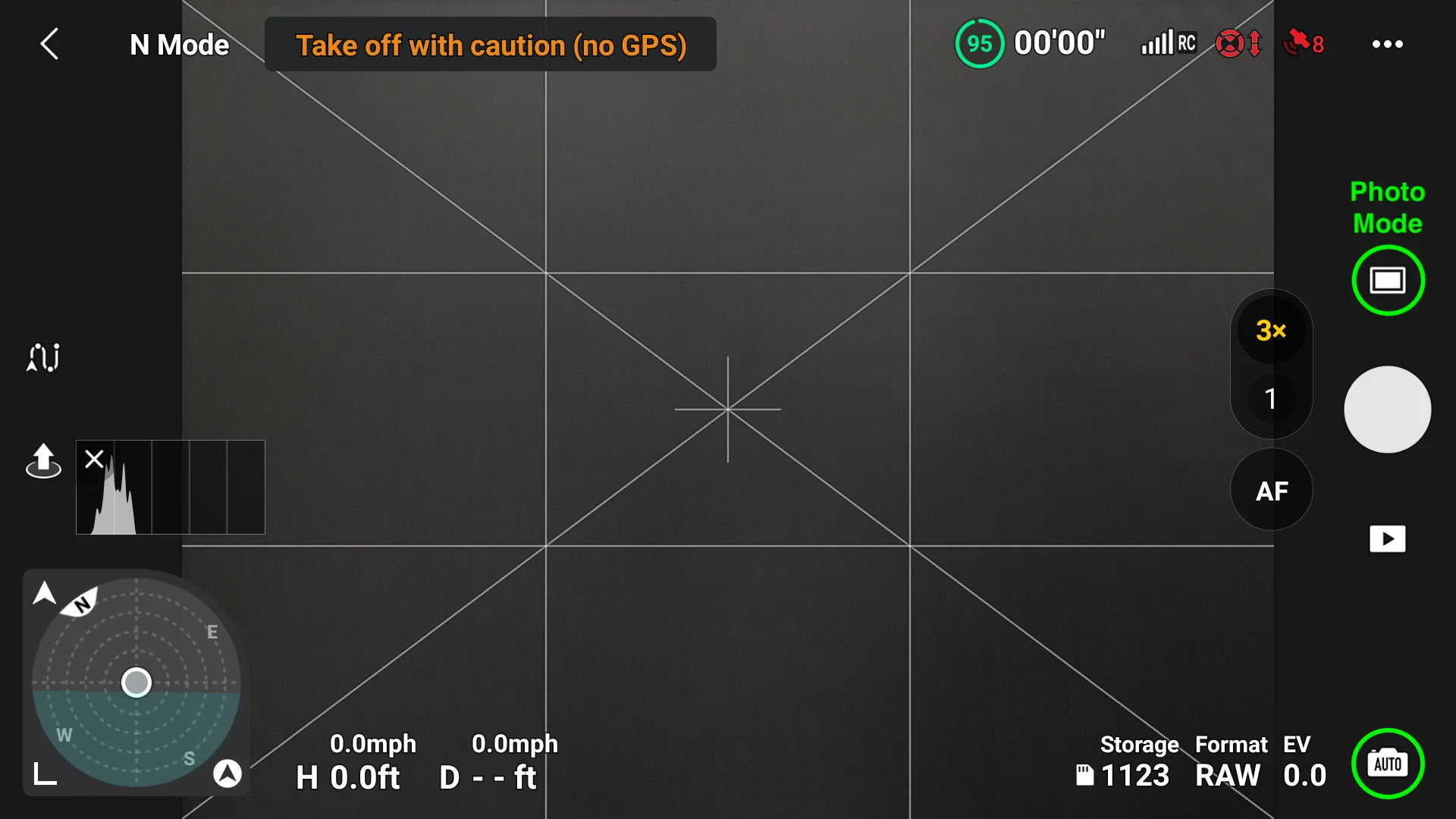
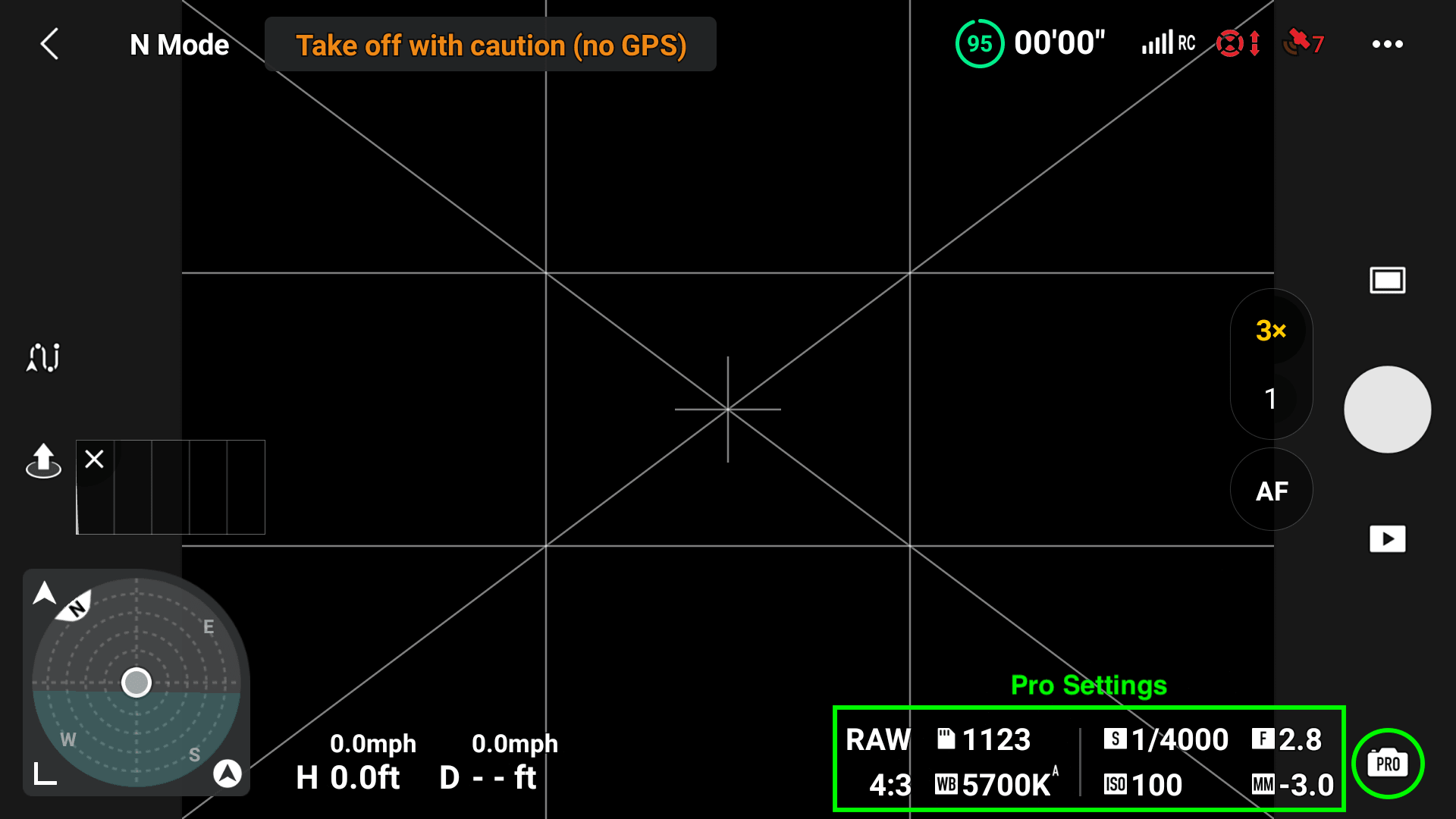
» MORE: Methods to Attach the DJI Air 3 to a Laptop (Video)
Aperture
Right here’s a snappy phrase in regards to the aperture at the Air 3.
The Air 3’s twin digicam gadget makes use of two separate apertures for the cameras. The 24mm wide-angle digicam has a hard and fast aperture of f/1.7 while the 70mm tele digicam has an aperture of f/2.8.
Can the aperture at the Air 3’s cameras be adjusted?
No. In contrast to the cameras at the professional-level Mavic 3 Collection, the aperture on either one of the Air 3 cameras is mounted, in order that they can’t be adjusted in any respect to assist in correctly exposing photographs or converting the intensity of box.
» MORE: Digicam Era in Drones (Defined)
ISO
ISO is the identify for the serve as that measures a digicam sensor’s sensitivity to gentle. This can be utilized and changed for each pictures and movies.
At the Air 3, ISO 100 is the bottom, or darkest worth, and when capturing video it may be as excessive as 12800 in night time mode (brightest).
Normally, whether or not capturing video with the Air 3, or any drone, the decrease the ISO the simpler.
Low ISO values make certain that the video photos isn’t noisy or grainy. It is strongly recommended that, every time the location permits, shoot with an ISO worth of 100.
In fact, like with anything else in images and videography, chances are you’ll want to make exceptions to this rule.
There is also occasions when the “keep at ISO 100 rule” will want to be damaged, to succeed in higher scene publicity.
With the Air 3’s primary 24mm broad digicam having such an open and immediate aperture of f/1.7, capturing at ISO 100 is perfect.
» MORE: Drone Pictures Making plans (Defined for Newbies)
To modify the ISO when capturing video:
Faucet ISO at the Professional Settings. As soon as within the ISO choices, use the slider to select ISO.

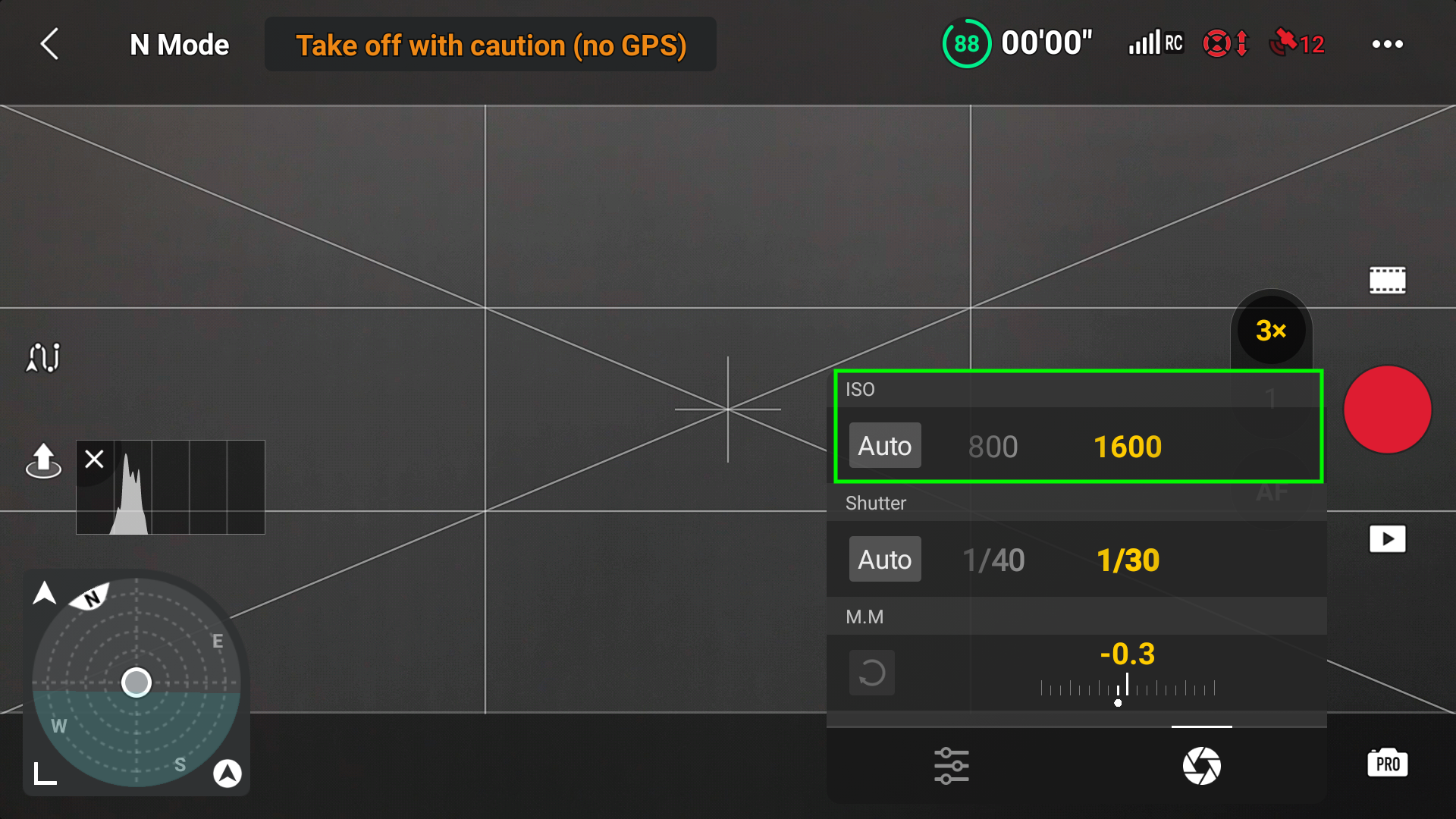
To modify the ISO when taking pictures:
Faucet ISO at the Professional Settings. As soon as within the ISO choices, use the slider to select ISO.

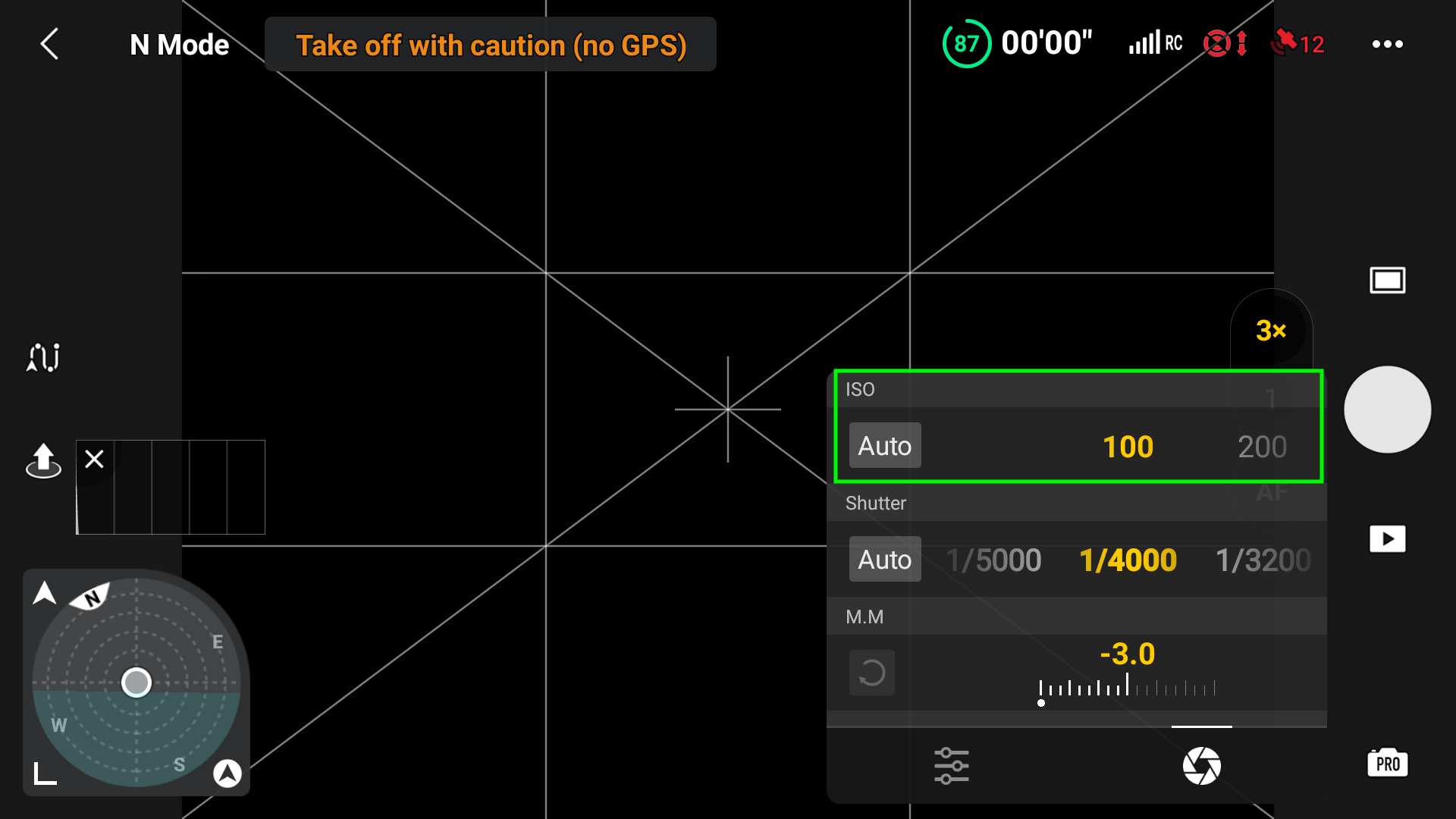
» MORE: What Is Drone Pictures? (Defined for Newbies)
Frames in step with 2nd (Video Most effective)
The body charge of a video or its FPS manner what number of frames are shot right through a given moment. The upper the price, the extra frames are in that given moment.
When it comes to drone photos, frames in step with moment aren’t as vital as it’s for floor digicam photos the place one may well be filming live-action sequences that want to be bogged down or appropriately rendering discussion between characters.
That isn’t to mention FPS isn’t necessary in any respect with regards to drone video. Typically, drones are filming scenes from an even distance, showcasing whole spaces, so oftentimes a low frame-per-second charge of 24 or 30 is best possible.
We’ll take a look at a couple of capturing situations and the proper frames in step with moment to seize the photos.
» MORE: DJI Mini 3 Professional for Actual Property Pictures (All You Want to Know)
Sweeping Scenic Perspectives
When capturing spaces with large and lovely vistas, mountains, and lazy water perspectives, 24 or 30 frames in step with moment works nice.
24 frames in step with moment is the common cinematic video usual and one thing that we’re aware of seeing in films.
When capturing at 24 FPS, it’s just right to take into account that there’s little or no room for slowing the photos down, as that’ll lead to uneven and jittery video photos.
When capturing in 24 frames in step with moment, it is very important be very clean at the keep an eye on sticks to keep away from jerky flight motion appearing up within the photos.
30 frames in step with moment can be utilized while you’d love to somewhat decelerate the photos in video enhancing device, to present it a smoother general look. Movies shot in 30 FPS may also be bogged down through 80% in submit.
The advantage of capturing in 30 frames in step with moment and somewhat slowing the photos down is that the photos is then smoothed out some.
That is particularly helpful if the drone operator is a bit of jerky at the flight sticks.
» MORE: 3 Tricks to Marketplace Your Trade With Drone Pictures and Videography
Sluggish Movement Pictures
The Air 3 has upped the ante through having complete 4k 100 fps video, as a regular. The true slow-motion photos is two.7k 200 fps.
If making plans to shoot slower-motion photos, and the usage of it in a 24 fps timeline, this may also be accomplished through capturing at both 60 or 100 fps.
You could need to shoot at those body charges to seize close-up perspectives of operating water, fast-moving boats which might be kicking up huge wakes and spray, and even faster-moving other people and animals.
If you’re on the lookout for much more drastic slow-motion photographs, the Air 3, as discussed, is in a position to capturing video at 200 fps.
If searching to decelerate 60 fps photos on a 24 fps timeline to your video editor, you’ll accomplish that at 40%, while the 100 fps photos may also be slowed right down to 24%.
Notice: To get the most efficient video high quality, you’ll need to set your Air 3 to file in 4k answer if you’re making plans on capturing photos between the 24 fps and 100 fps vary. If capturing at 200 fps, the Air 3 will drop down to two.7k answer.
» MORE: Absolute best Drones for Evening Time Use (Pictures & Video)
To modify the FPS (Frames in step with 2nd) when capturing video:
Step 1: Faucet the video answer and fps at the Professional Settings. On this instance, mine is 4k 30.

Step 2: Within the RES&FPS segment, use the slider to select FPS.
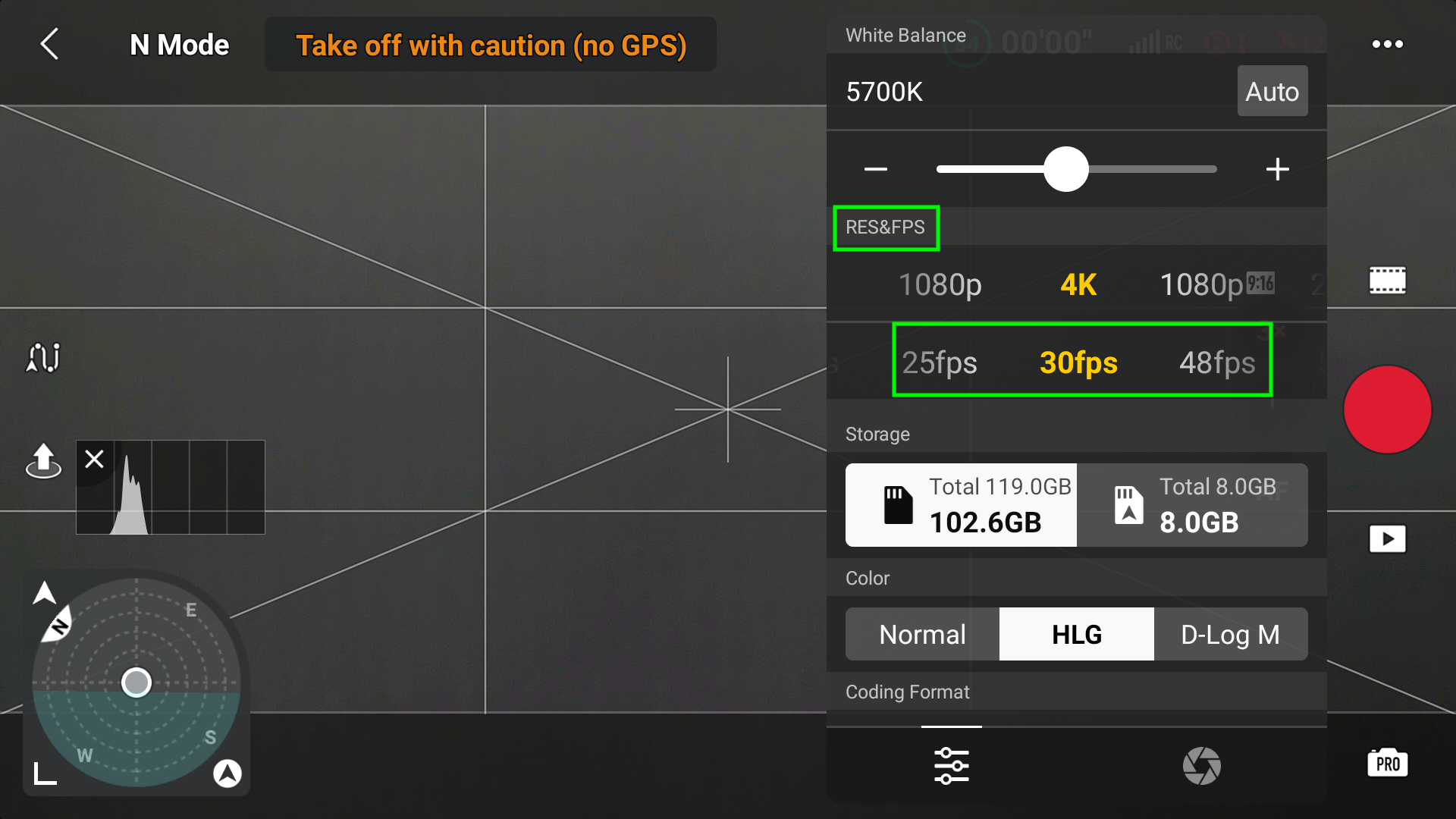
Shutter Pace
Shutter velocity serves two very distinct functions with regards to pictures and movies: publicity and movement blur.
» MORE: Pictures with Mini 3 Professional (For Newbies)
Publicity
In case your pictures or video must be brightened or darkened, out of doors of the ISO values, you’ll up the shutter velocity, which is able to darken the photos, or sluggish the shutter velocity, which is able to brighten the photos.
The Air 3 will robotically modify the shutter velocity when in Auto Mode, to embellish or darken the scene.
Movement Blur (For Footage)
For drone pictures, chances are you’ll need to seize one thing in movement as a blur.
You’ll specifically see this in panorama images the place there’s operating water within the type of waves or waterfalls, and the water has a dreamlike cushy impact.
This comes from the usage of a excessive shutter velocity.
» MORE: Autel vs. DJI – Which Drones Are Higher?
Correct Movement Blur (For Video)
Movement blur is an important facet of capturing movie. If the shutter velocity is just too low, then video photos will glance extraordinarily blurred, whilst too excessive a shutter velocity will consequence within the photos being uneven.
In the case of capturing video, the shutter velocity must now not be used to correctly disclose the video, however as an alternative, it must be used to reach correct movement blur.
To try this, the 180-degree rule comes into play.
The 180-degree Rule
In the case of shutter velocity and attaining the correct movement blur for the FPS you’re capturing in you’ll want to have your shutter set to double (180 levels) your body charge.
This implies if you’re capturing at 24 frames in step with moment, you’d need your shutter velocity to be double that, on this case, 1/50 of a moment, because the Air 3 does now not have a 1/48 choice.
For 30fps, 1/60, and for 120fps, 1/240.
With the 180-degree rule implemented, all your photos could have the correct movement blur the attention is aware of seeing in video photos.
» MORE: Drone Cinematography- Getting Began in Drone Filmmaking
To modify the Shutter Pace when capturing video:
Step 1: Faucet the shutter velocity. In my instance, it’s 1/30.

Step 2: Underneath the Shutter segment, alternate the slider to the price you’d like to make use of.
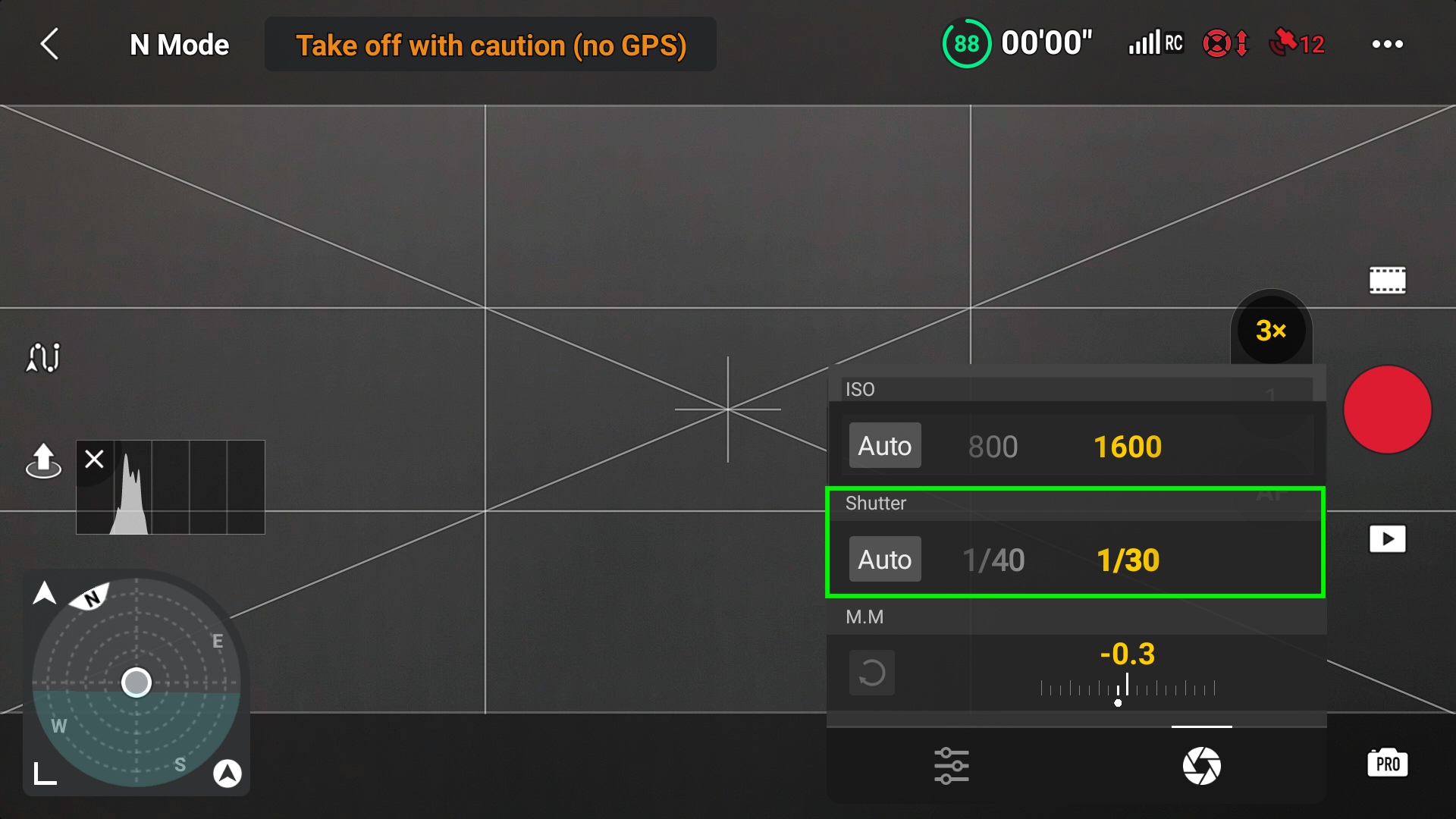
To modify the Shutter Pace when taking pictures:
Step 1: Faucet the shutter velocity. In my instance, it’s 1/4000.

Step 2: Underneath the Shutter segment, alternate the slider to the price you’d like to make use of.
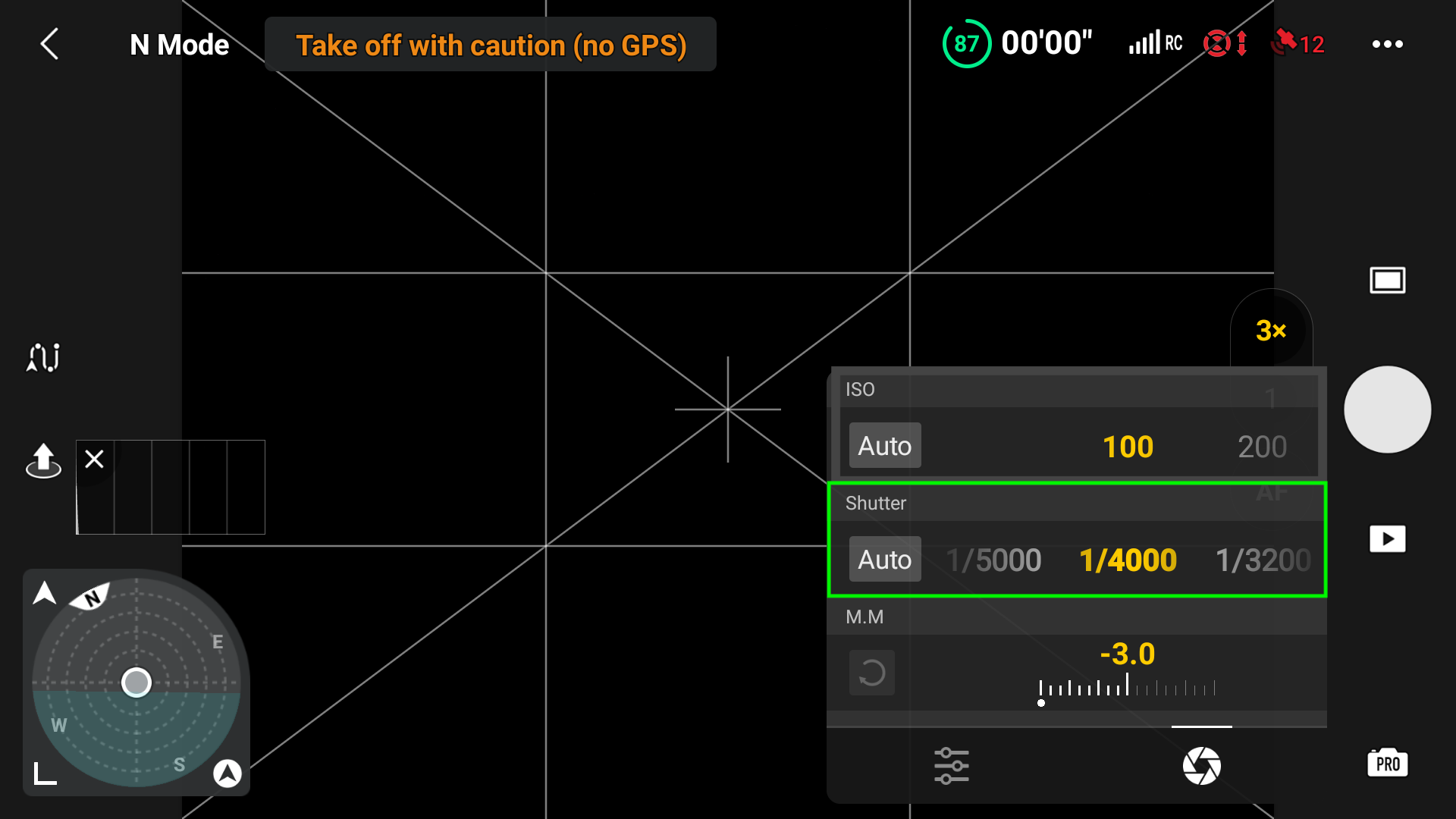
» MORE: Absolute best Drone Video Editor (With Screenshots)
White Steadiness
The white stability choice within the Air 3, as with each digicam, evens out the colour temperature in a picture or video to make the picture glance extra herbal (disposing of over the top yellow or blue casts).
That is performed through bringing in reverse coloration temperatures that assist deliver the whites again to impartial, which impacts all the coloration of the photos.
The Air 3 permits the white stability to be set to Auto, even if capturing in Professional mode, so that you’ll need to pay attention to this.
Manually Make a choice White Steadiness
When opting for the most efficient settings for video, you’ll need to take the white stability out of vehicle mode and set it manually.
This will likely appear tough in the beginning because the Air 3 does now not have a selected set of white stability profiles like Sunny and Cloudy, which was once within the DJI Pass 4 app many may take into account.
Why must the white stability be set manually, as an alternative of letting the Air 3 make a choice it?
It is because because the lighting fixtures stipulations alternate periodically the Air 3 will attempt to alternate the white stability of the photos whilst flying via a scene.
This may occasionally be jarring if too drastic or seem unprofessional for the ones handing over paid content material to purchasers.
As a substitute, it’s higher to set the white stability, shoot the scene, and if the sky will get cloudy or sunnier, give up capturing, modify the white stability, after which proceed capturing.
» MORE: Advantages of Drone Videography (Defined for Newbies)
To set the white stability manually when capturing video:
Step 1: Faucet WB.

Step 2: Use the slider to manually modify the white stability.

When taking footage, it’s possible you’ll both make a choice to set the white stability manually or let the Air 3 make a choice the white stability robotically.
To both set the white stability manually or to auto when taking pictures:
Step 1: Faucet WB.

Step 2: To manually modify the white stability, use the slider. To set the white stability robotically, faucet Auto.
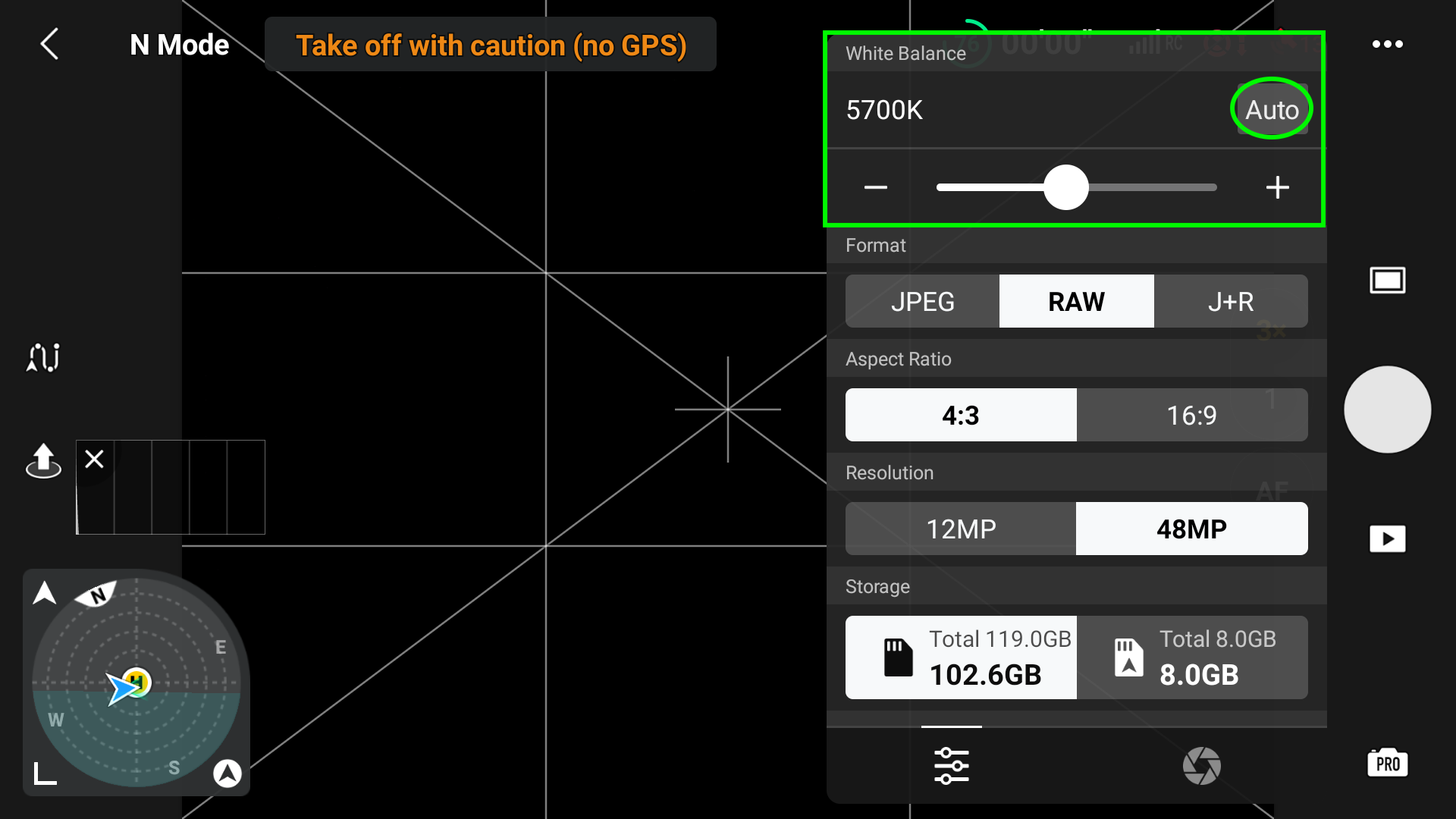
» MORE: Strengthen your Aerial Pictures with those to hand guidelines
Colour Profiles (Video Most effective)
The Air 3 recently has 3 coloration profiles: Standard, HLG, and D-Log M. The Standard coloration profile is 8-bit, while HLG and D-Log M are each 10-bit.
In the case of coloration intensity (8-bit or 10-bit), we’re relating to the quantity of coloration and the number of sun shades a digicam can file in.
The upper the bit intensity, the extra colours can be utilized to improve a video’s element and visible high quality. With this comes higher, extra real looking, or much more creatively color-graded photos.
Movies recorded in 8-bit make the most of RGB the usage of 256 colours in step with channel, which means 8-bit can show a little bit over 16 Million colours (16.7 Million to be actual).
When put next, movies recorded in 10-bit use 1024 coloration ranges in step with channel, showing over 1 billion colours (1.07 Billion). With all of this get admission to to paint and sun shades, photos may also be truer to lifestyles.
Notice: Since we’re speaking about the most efficient video settings for the Air 3, we inspire you to shoot within the 10-bit coloration profiles, which might be HLG and D-Log M.
» MORE: DJI Air 3 Vertical Mode (Video)
D-Log M
D-Log M is a toned-down variant of D-Log and a relatively flat video coloration profile used in particular in DJI drones.
The D-Log M 10-bit coloration profile incorporates additional info and dynamic vary than the standard coloration profile.
As a result of this, it may be changed and changed and is perfect for making use of Cinematic LUTs (search for tables) for a extra movie-like look.
When D-Log M is selected, the photos shall be recorded in 10-bit. Moreover, when recording in D-Log M, the h265 codec (high-efficiency video coding) is robotically implemented. You can not alternate it to h264.
Notice: Despite the fact that the h265 codec is of upper high quality, it does absorb extra SD card house than the h264 codec. This may occasionally reason the gadget you’re the usage of for enhancing to paintings tougher and in all probability slower.
Capturing in a 10-bit coloration profile allows you to broadly color-grade your photos in a video editor with out the worry of destroying the photos, because of coloration artifacts associated with pushing the colour too a ways.
» MORE: Guidelines for Capturing & Modifying Drone Movies (Information for Newbies)
HLG (Hyper Log Gamma)
HLG is even more straightforward to paintings with in video editors if you wish to color-grade. Like D-Log M, HLG may be a 10-bit, h265 coloration profile, with the next dynamic vary than the standard coloration profile.
HLG additionally has a punchier, much less flat symbol than D-Log M, making coloration manipulation more straightforward. For HLG, including slight distinction and saturation improves the full photos in comparison to that of the standard coloration profile.
Like with D-Log M, you’ll choose between a lot of LUTs to get the cinematic glance you are attempting to succeed in.
» MORE: Methods to Fly DJI Air 3 Drone (With DJI RC 2)
To select coloration profiles at the fly without having to enter the primary DJI Fly settings:
Step 1: Faucet at the present coloration profile. Mine is about to HLG right here.

Step 2: Underneath Colour, make a choice the profile you want to use. Take note, HLG and D-Log M use the h265 codec.

A Tip for Capturing Higher Video
ND Filters
ND filters are a kind of merchandise that should you by no means have to make use of one, chances are you’ll now not even know they exist. ND filters act as sun shades for cameras.
If you’re the usage of the settings recommended on this article, out of doors of ISO, there aren’t many stuff one can do to switch the publicity of the video photos being shot.
The apertures at the Air 3 cameras are mounted at both f/1.7 (24 mm) or f/2.8 (70 mm). They are able to’t be used to darken the photos through opting for a extra clamped-down f-stop like you’ll at the Mavic 3 collection.
Additionally, to handle correct movement blur, the shutter velocity must be double the body charge, so the shutter velocity can’t be used to darken the photos both.
When it comes to the Air 3, when correctly capturing video, the one to be had choice for photos this is too brilliant is to make use of an ND filter out. The filter out will reasonable the volume of sunshine entering the digicam.
There are slightly a couple of producers that make ND filters for the Air 3.
We propose the next:
» MORE: Drone Pictures: Novice’s Information to Getting Began
Photograph Comparable Settings
For many of this text, we talked in regards to the settings that have an effect on each pictures and movies. We’ll now contact on the most efficient settings for taking pictures.
For the picture taken underneath, I used all the settings discussed on this segment.
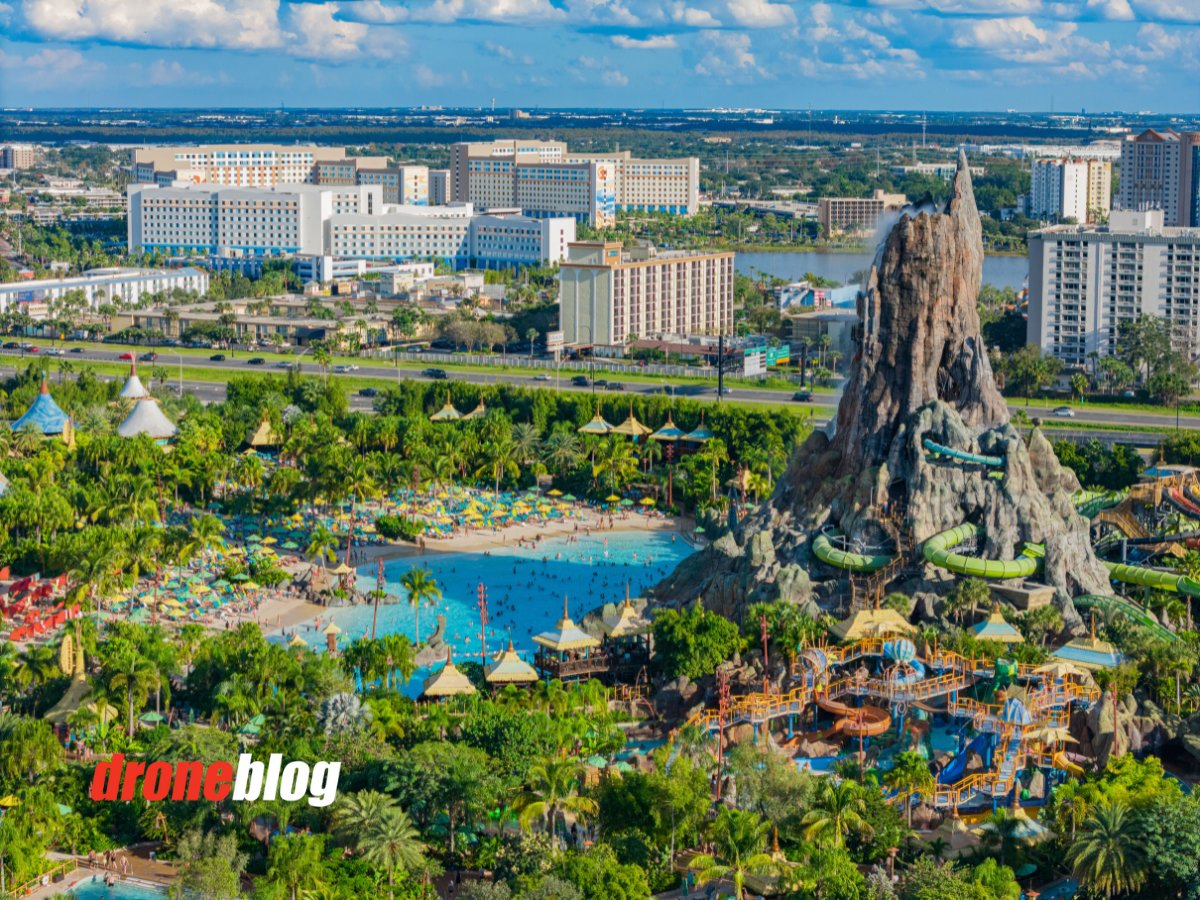
Image Structure (RAW)
Like with all DJI complex and prosumer drones, the Air 3 has the method to shoot pictures in JPG or RAW codecs.
For the most efficient pictures at the Air 3, it’s endorsed the RAW structure be used.
RAW recordsdata are uncompressed, unprocessed recordsdata that include all of the data the Air 3s twin digicam gadget collects.
This knowledge would come with symbol colours, dynamic vary (highlights & shadows), white stability, and so forth., all of which it is possible for you to to regulate inside of picture enhancing device.
RAW recordsdata additionally absorb extra space than the better JPG structure, through greater than 20 occasions as a lot in some circumstances.
» MORE: Drone Pictures for Actual Property (Absolute best Drones and Practices)
Facet Ratio (4:3)
For images (and cinematography), the facet ratio of a picture is the proportional courting between a picture’s width and peak.
The Air 3’s picture facet ratios are both 4:3 or 16:9.
The 16:9 facet ratio is usually identified as a large panorama ratio and handiest makes use of a selected portion of the digicam sensor to crop the picture to suit the broad ratio.
We propose the usage of the 4:3 ratio.
Whilst the 4:3 ratio produces a extra square-looking picture, all the symbol sensor is getting used. In the event you’d love to crop the picture to the ratio you’d love to submit in picture enhancing device, this will simply be achieved.
» MORE: DJI Mini 3 Professional – Methods to Trade Video Settings (Video)
Solution (48 MP)
Despite the fact that the Air 3s cameras are technically 12 MP, DJI has hired the use of Quad Bayer era.
Quad Bayer era makes use of the small pixel aperture of the Air 3’s twin cameras and will increase answer through breaking each and every pixel into 4s, which then will increase sharpness.
As a substitute of only a 12 MP sensor, the digicam can act as a 48 MP sensor.
The one factor I’ve spotted with the usage of the 48 MP symbol choice is that, in some circumstances, randomly, the image may be afflicted by chromatic aberration.
Chromatic aberration is the place there’s noticeable pink or inexperienced fringing. This may simply be lowered in picture enhancing device.
To set or alternate the picture settings from throughout the stay view display screen:
Step 1: Faucet any place at the left aspect of the Professional mode segment.

Step 2: Make a selection the Structure, Facet Ratio, and Solution choices you prefer to modified.
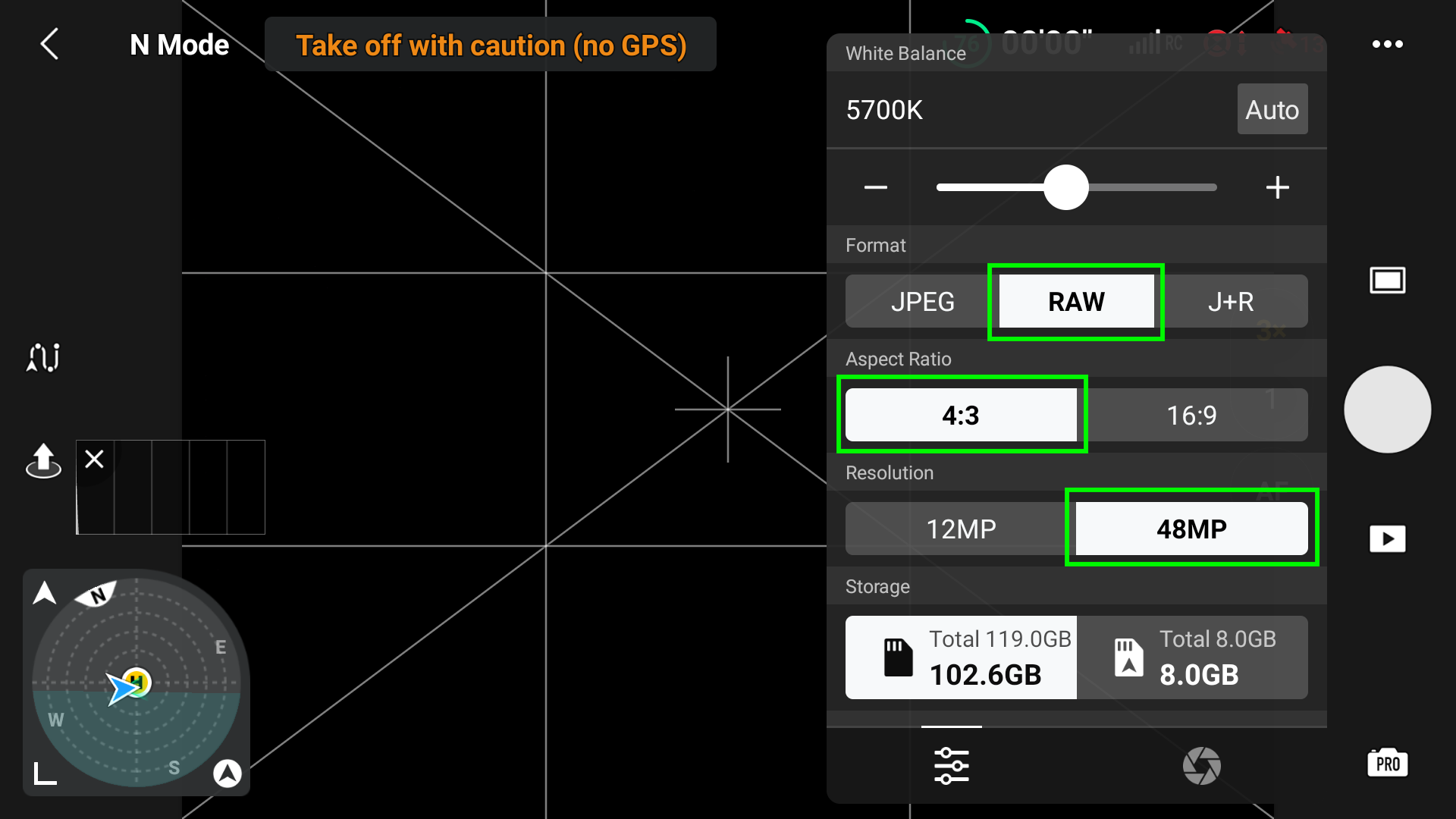
» MORE: The place Is the Serial Quantity on DJI Air 3 (Spoke back)
Composition Comparable (Footage and Video)
The DJI Fly app has slightly a couple of gear to assist within the composition of picture and video photos. Turning those on can support in framing your photographs and holding topics center-frame if that’s what you’re going for.
Grid Traces
Gridlines are damaged into 2 varieties, with the addition of a middle goal.
Those being:
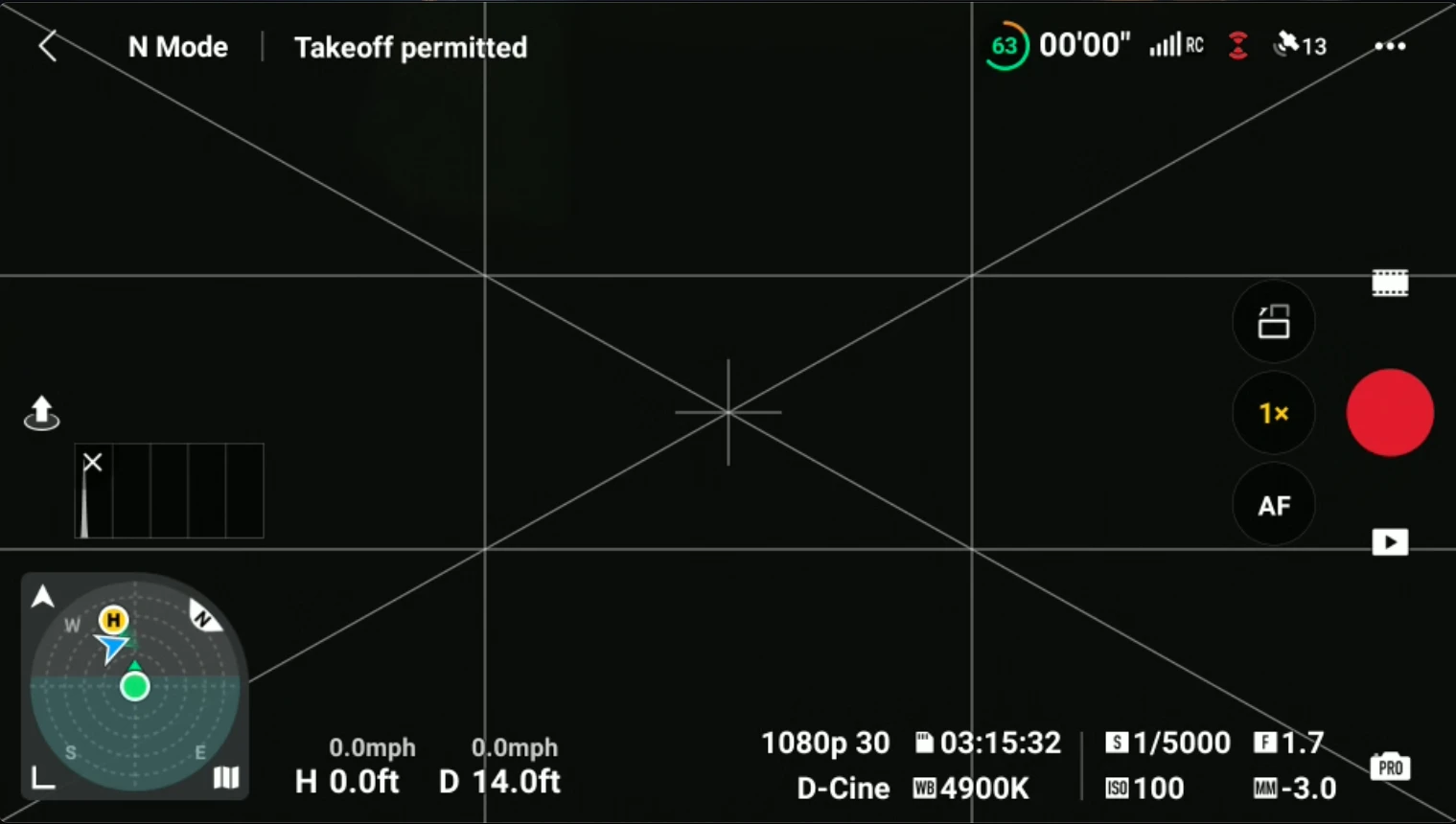
Rule of Thirds
The Rule of Thirds overlay has 9 equivalent blocks that divide each and every body.
There are 4 intersecting issues on those traces and putting your topic on a number of of those intersecting issues creates extra compelling compositions than simply having the topic in the course of the display screen
Diagonal and/with Heart Goal
Those traces support in framing up your shot. This may appear to be a double-edged sword.
For some, the diagonal traces is also an added distraction, while, for others, they’re helpful while you’d like a selected topic (boat, jet skier, or one thing else) to be entrance and middle within the image.
To get admission to the gridlines and middle goal choices:
STEP 1: Open the choices menu within the higher right-hand aspect of the DJI Fly app stay view display screen.
STEP 2: Pass to the Digicam Tab.
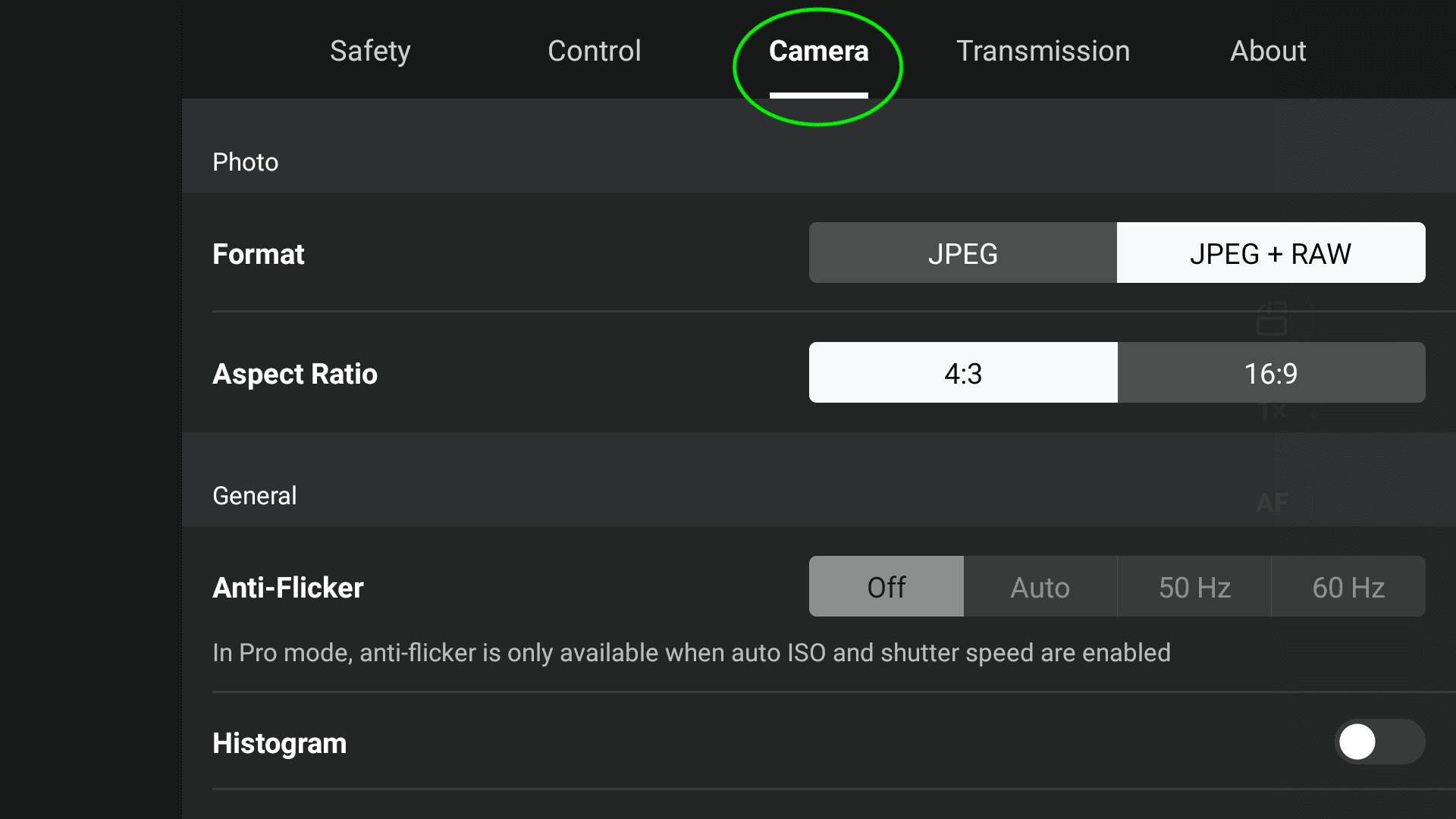
STEP 3: Scroll right down to Gridlines and make a choice both Diagonal, Rule of Thirds, Heart Goal, or all 3.
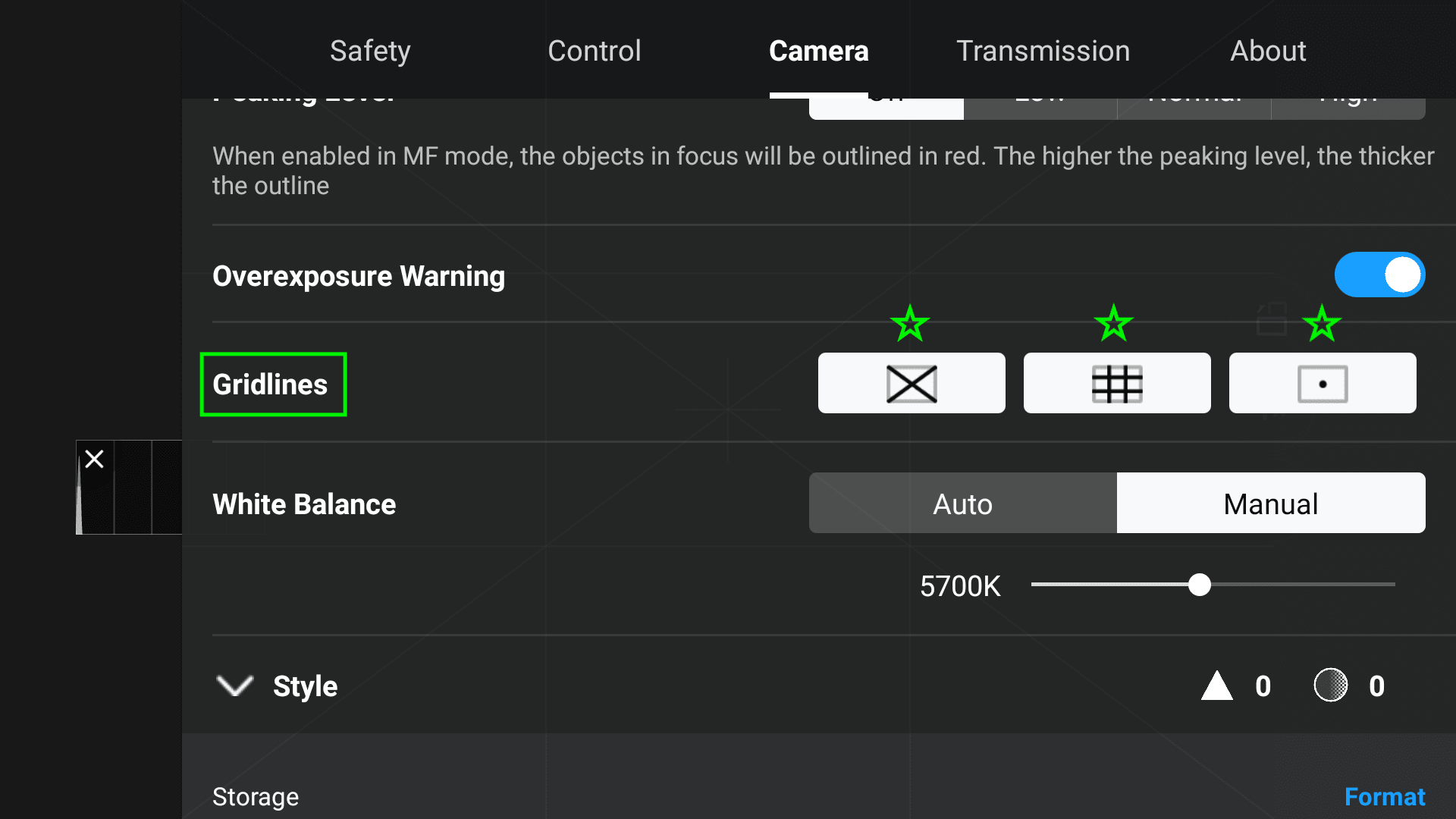
Use the Tele Digicam
One of the most primary attracts of the Air 3, except its cost-to-feature ratio, is the addition of a moment digicam.
This moment, 70 mm identical tele digicam is excellent for including some other inventive measurement to each photographs and movies.
The 70 mm lens, with using parallax strikes, provides a much-needed standpoint and cinematic worth to video photos, in addition to giving nonetheless pictures the good thing about taking pictures any topic from additional away.
When capturing any content material at the Air 3, it frequently can pay to take action in each 24 mm and 70 mm when conceivable.
» MORE: Does DJI RC Professional Paintings with Air 3 (Spoke back)






